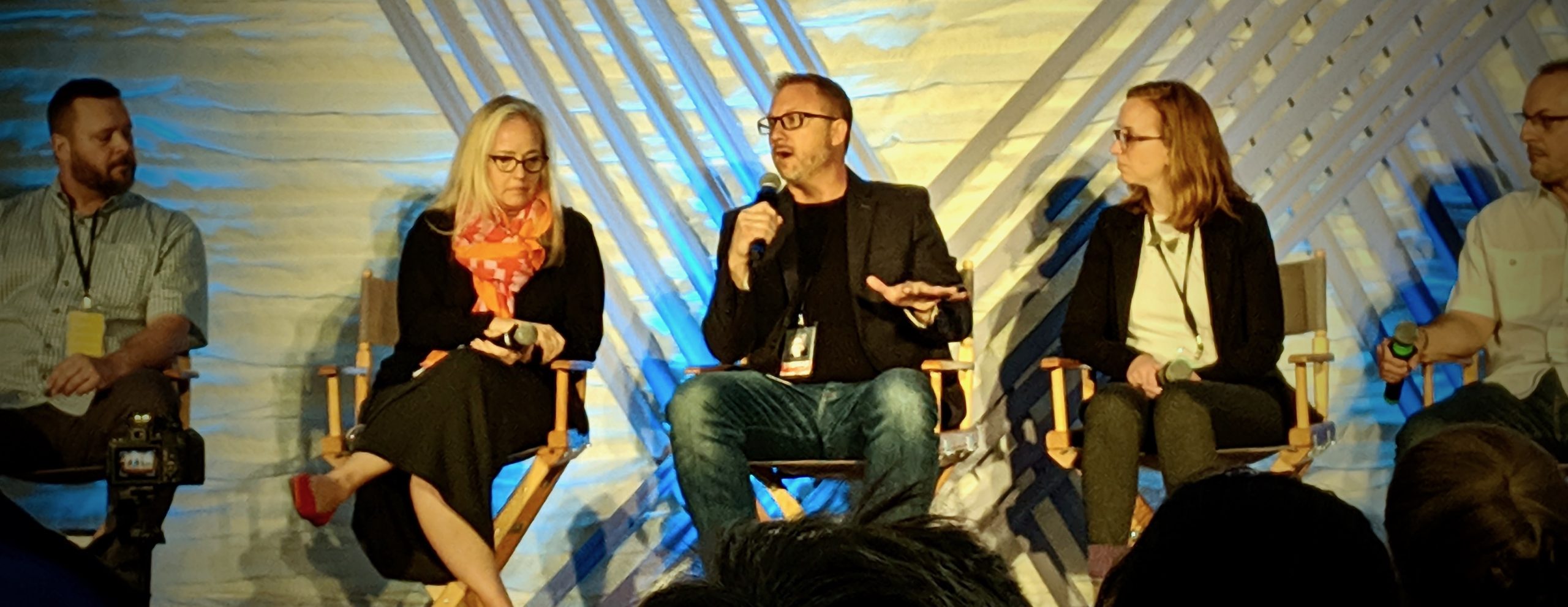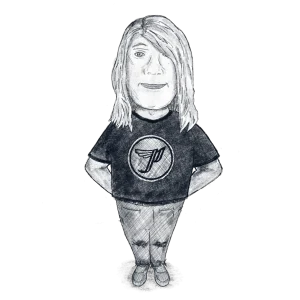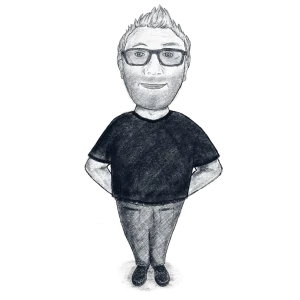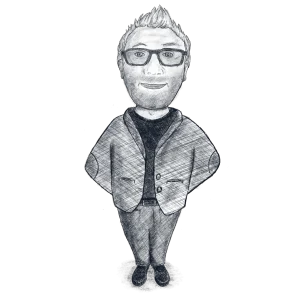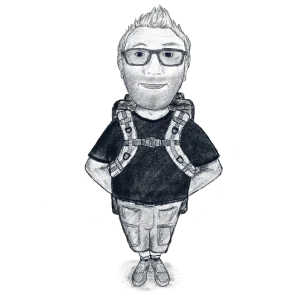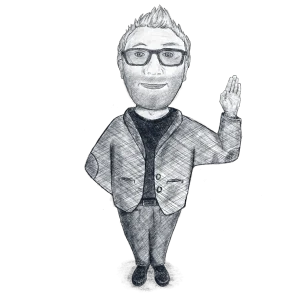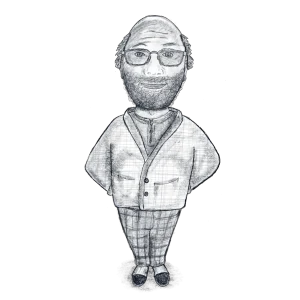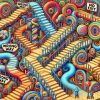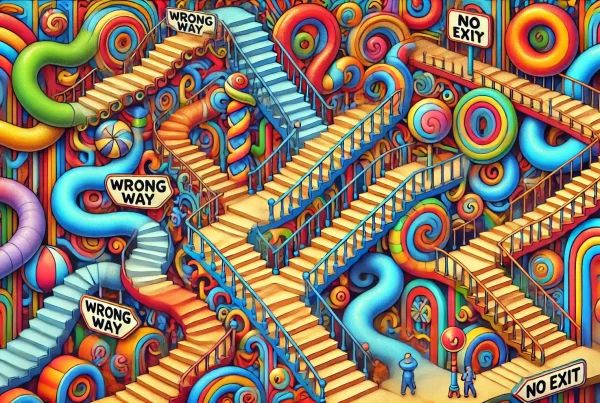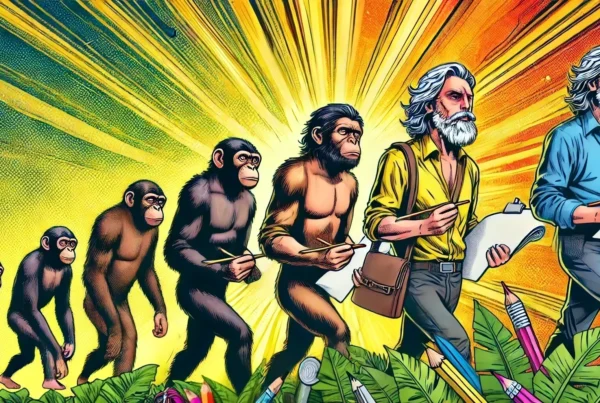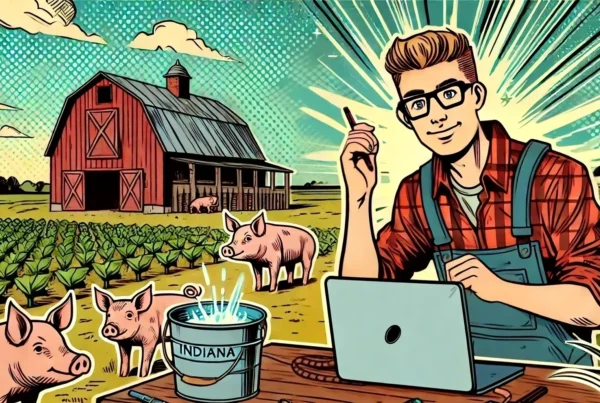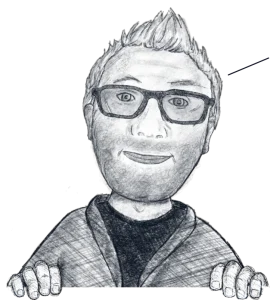Pigs and Poetry
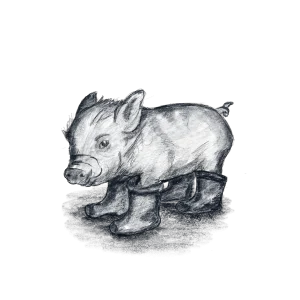
Early life found me born in Iowa and raised on a small pig farm in Rensselaer, Indiana, where life lessons came early. Surrounded by endless chores and the unpredictable nature of farm life, I quickly learned the value of hard work, resourcefulness, and creativity—because when something breaks in the middle of nowhere, you learn to fix it yourself. My early dreams of becoming an English teacher and penning the next great novel were fueled by a love for storytelling. But after churning out enough questionable poetry to wallpaper a barn, I had to face facts: my writing was, well, let’s just say “an acquired taste.”
Guidance from my high school counselor was a turning point. Knowing I’d need to put myself through school, he suggested I consider a career path that could, you know, actually pay back my loans. Enter Mechanical Engineering—practical, structured, and full of opportunity. And, not being a huge fan of math, it was probably for the best that I didn’t fully connect “engineering” with “math” at the time. But as it turns out, I loved the blend of logic and creativity. Engineering gave me a strong foundation in problem-solving and process, but it didn’t take long to realize that what really fascinated me wasn’t just how things worked, but how people interacted with them. That’s when I found my true calling: design.
Wandering Through My Early Career
I started my career as a mechanical draftsman, designing parts for night vision goggles and submarine towed arrays. One day, I was asked if I’d like to learn to code and become a developer. Sure, why not? I was decent at coding but even better at designing experiences—foreshadowing my future in product design. My journey took me to American Express, where I led front-end development and design teams, introducing design into the organization. But I had made a promise to my wife when I proposed that we’d move to Hollywood so she could pursue her acting career—so, one day, we did.
I built a small agency, threePop, bringing design and front-end teams into companies that lacked them, working with clients like iManage (later acquired by Interwoven). Craving stability, I transitioned to Ameriquest Mortgage, where I learned the intricacies of two-sided networks and enterprise systems—experience that caught the eye of Move, who runs Realtor.com and a variety of other sites.
Elevating Design at Realtor and Intuit
At Move, aka Realtor.com, I was brought on to transform how the company approached design. When I started, the design team consisted of just 4 people, and design was seen as something that made things look good rather than as a strategic tool for innovation. Over time, I grew the team to 28 talented designers and researchers, embedding design into the company’s DNA. This shift fundamentally changed how Realtor.com developed products and engaged with users. By raising the bar on craft and strategy, we not only improved customer satisfaction but also increased the company’s value—culminating in Realtor.com’s $1 billion acquisition.
Then came Intuit, where I took on the challenge of disrupting the payments and payroll space. At the time, the design team consisted of just 3 people, but I saw the potential for much more. Over the next few years, I grew the team to 46 designers, scaling our efforts and targeting customer-focused solutions. This work contributed to significant business growth, driving $1B in monthly charge volume. Through innovative design strategies, we made complex financial tools accessible, user-friendly, and impactful for small businesses.
Disrupting FinTech at PayPal
At PayPal, I took the helm of a pivotal project: transforming the global Merchant Platform. My mission was clear—scale the platform to new heights, focus fiercely on user-centric design, and align every facet of customer interaction with our broader business objectives. This wasn’t just a redesign; it was a complete re-envisioning of how the platform operates and serves businesses from the ground up.
The impact? We saw a 33% surge in activations and sparked over $53 million in incremental revenue. But the numbers only tell part of the story. By reimagining the platform’s experience, I crafted a space where businesses of all sizes could thrive. Whether a small startup or a sprawling enterprise, merchants found a newfound ease in engaging and transacting, propelled by a platform that anticipated and adapted to their diverse needs.
This transformation didn’t just tweak the existing framework—it revolutionized how PayPal supports and interacts with its global merchants, establishing a new standard for how technology can enhance commercial interactions in the digital age.
When I dove into the redesign of the Merchant Platform at PayPal, I wasn’t just tweaking a few features—I was setting the stage for a revolution in how merchants onboard and interact with our systems. My goal? To create a gateway so seamless that new merchants could integrate with ease and speed, transforming their first encounter with PayPal into a launching pad for success.
The heart of this transformation was a radically simplified onboarding process. We stripped away the complexities that had bogged down our new merchants, paving a path that was clear and intuitive. This wasn’t just about cutting down setup times—though we dramatically did—it was about crafting that first impression to be as engaging as possible, setting the tone for all future interactions.
But why stop at onboarding? We pushed the envelope further by rolling out AI-powered recommendations across the platform. Imagine a system intelligent enough to not just respond to merchant needs but anticipate them, offering personalized insights that catalyze business growth. This was no longer just a platform; it became a proactive partner in each merchant’s journey.
These initiatives transformed the Merchant Platform from a tool into an experience, reinforcing PayPal’s role as a pioneer in seamless financial solutions. Through this blend of technology and thoughtful design, we didn’t just keep up with the demands of global commerce—we stayed ahead, shaping its future.
Life Beyond Work
Beyond my design career, family and adventure are at the heart of my life. My wife, Michelle, runs the blog Staying Blonde (stayingblonde.com), which has us constantly exploring new places—and where I moonlight as an editor, writer, designer, and part-time engineer. Together with our two amazing kids, William (16) and Audrey (13), we’ve embarked on countless journeys. Before the kids were born, Michelle and I backpacked through Vietnam and Mexico, and now we continue to share our adventures with them in tow.
This year, we explored Greece and Ireland, while last year took us to Italy. We’ve road-tripped across the U.S. for six weeks, ventured through Costa Rica, and, of course, made regular stops at Disneyland—because who doesn’t love a little magic? Michelle, William and Audrey keep me humble, but they’re also the best travel companions I could ask for, always ready for the next adventure.
What's Next?
Today, I’m a curious, strategic design leader who provokes what’s possible, elevates craft, and builds empowered, inclusive teams. When I’m not shaping the future of design, you’ll find me mentoring, traveling, or dreaming up our next family adventure.
For the next stop in my journey I’m looking for a leadership role where I can leverage my experience in scaling design teams, driving innovation, and building impactful, user-centric solutions. Whether focused on consumer or merchant experiences, I’m most excited by the challenge of solving complex problems and guiding the team to grow through those challenges. I’m drawn to a team with a strong vision where design is viewed as a strategic asset aligned with the company’s goals. I thrive in environments that foster talent, innovation, and inclusivity. My ideal role would allow me to grow as a leader, shape the design function, and contribute to a meaningful mission. Good stuff.
Later... Much Later
As for the future? I imagine I’ll lose a bit more hair, sport a well-loved cardigan, and maybe even embrace socks with sandals. I’ll catch up on all the books and video games I’ve missed, and if the stars align, the D&D campaign I’ve run for 5 years will be celebrating its 20th anniversary. I’ll still be designing and coding—because creating things just for the joy of it never gets old. And, yes, I’ll probably still be writing bad poetry.
But today is not that day. Instead, let’s create something amazing together, shall we?

